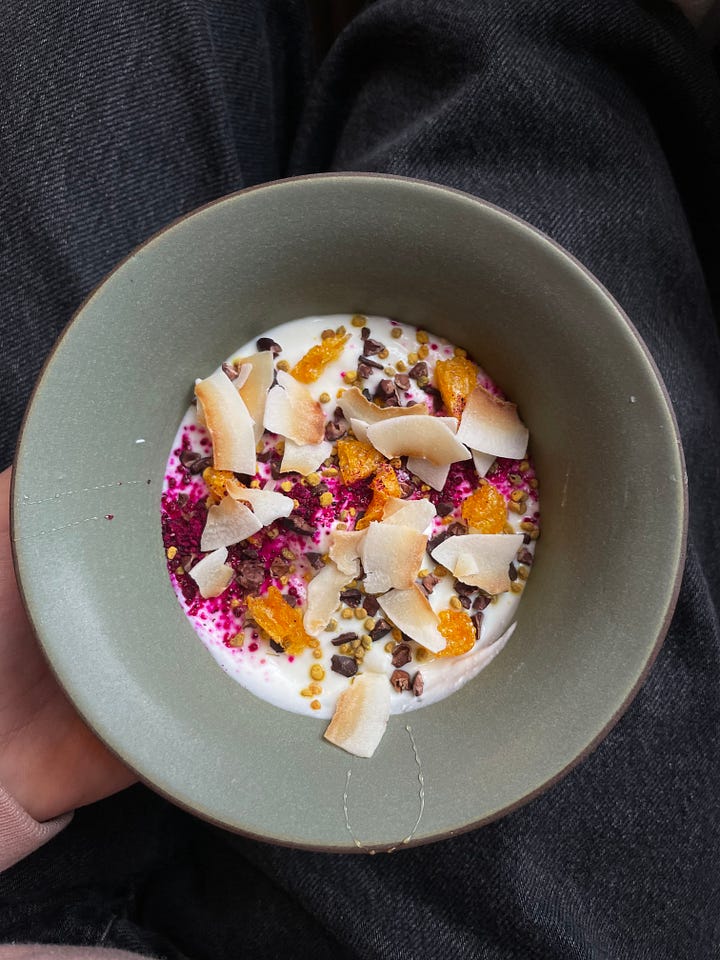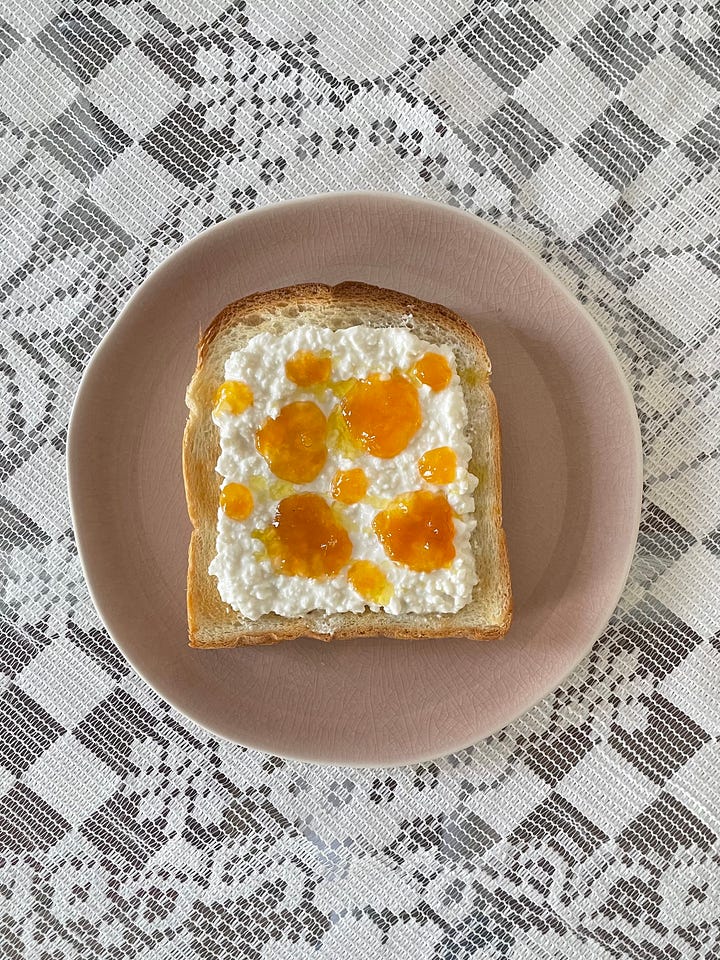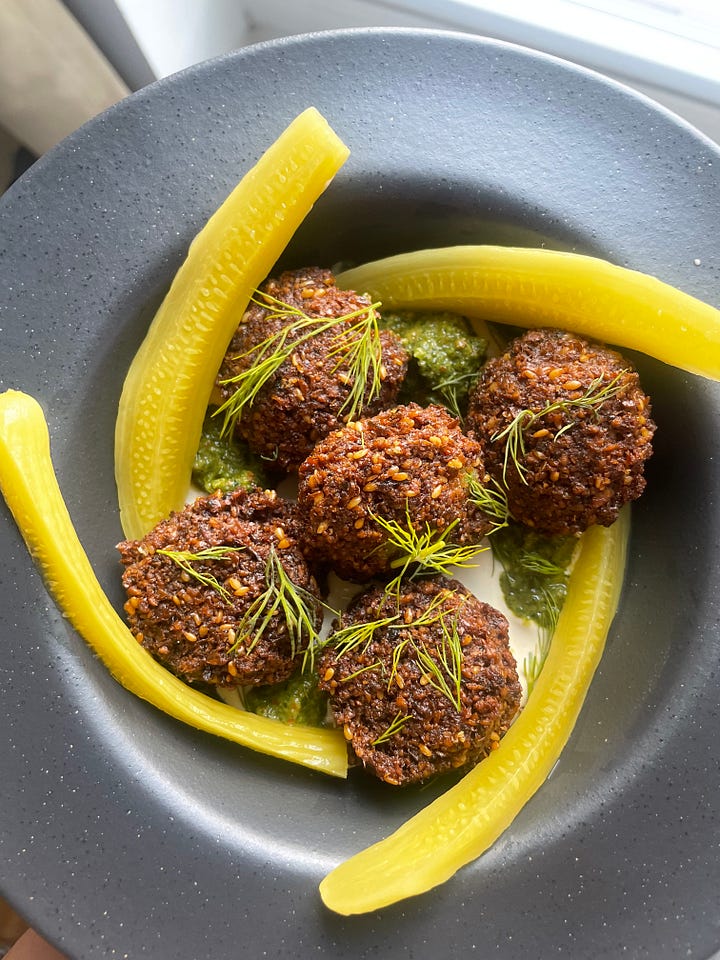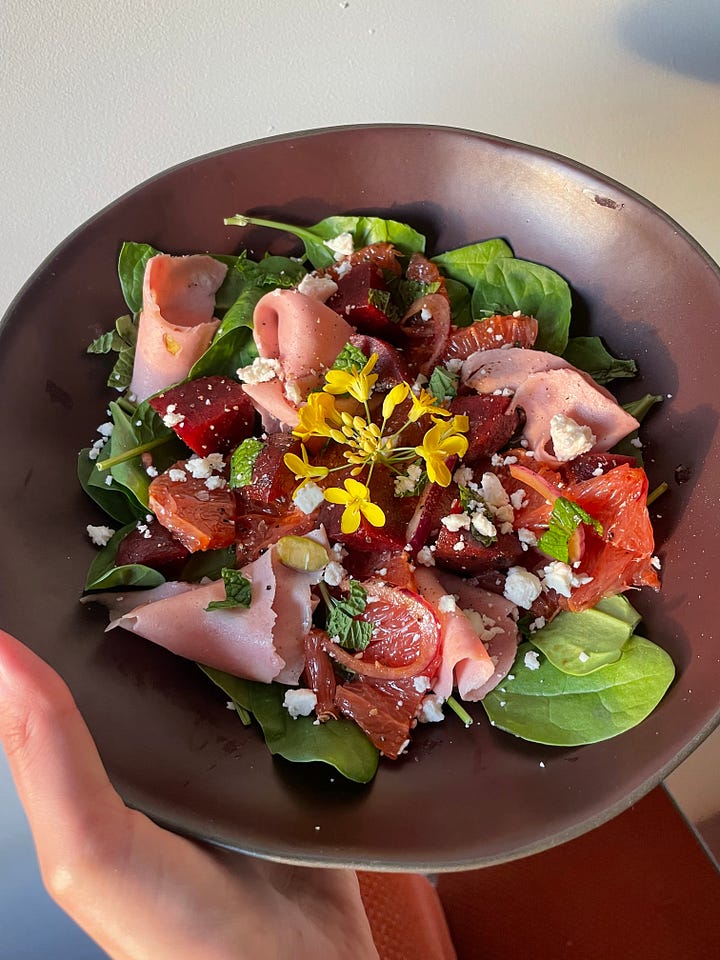Just Because We Shouldn't Play With Our Food, Doesn't Mean It Can’t Be Fun
Introducing 'dopamine plating' & food styling tips to bring to your next meal.
I feverishly sought joy this winter as the cold, dark days endlessly dragged on—though I found solace in cooking, a new perspective reinvigorated the otherwise all-too-familiar activity. Now, it’s here to stay.
To combat an intense case of SAD, I reflected on mood boosters, and dopamine dressing and decor immediately came to mind. It wasn’t necessarily the aesthetic that resonated, but rather the emotional force and playful approach to style. I believe this framework has the longevity to outlast the fad. It also led me to wonder: Can I apply this concept to cooking?
Both dopamine decor and dressing have brought a sense of whimsy into my home and wardrobe. But what about my first love—food? Sure, the culinary world has become more fun (even wacky at times) with extravagant cakes, food artists, and edible sculptures. Still, those aren’t woven into the fabric of daily life the way the dopamine styling is. So, how do we bring that same dopamine hit to our everyday experience of food?
Well, let’s start with our next meal.
Whether it’s a late-night snack or the most important meal of the day, shared amongst friends or eaten by myself on the couch, I find happiness in, well, making my food look pretty. I’m calling it dopamine plating—the simple art of dressing a dish to elevate your experience of food in an everyday, accessible way. Drawing inspiration from food stylists, restaurant experiences, content creators, and cooking competitions—essentially a byproduct of food media consumption—to extract creativity from what we eat instead of merely sustenance.
Working at a top food media company, witnessing (and tasting!) the magic of a brilliant test kitchen, planted the seeds of dopamine plating—an offshoot of food styling. I picked up tricks from experts like Anna Billingskog, who taught me game-changing techniques, from building dream-worthy cheeseboards to the most perfect swirly bowl of spaghetti (small bundles, use tongs!), and always embracing the crumbs.
Bon Appétit editor-in-chief Jamila Robinson introduces each episode of Food People with, “food is something we all participate in,” perfectly capturing why I’m drawn to it as a medium—eating is universal, communal, and approachable.
While the collectivity of food is paramount, it’s not an integral part of dopamine plating. A beautiful dish is undeniably Instagrammable, however, there’s something pleasantly subversive—perhaps even radical—about an autonomous expression of food. It isn't about impressing others or relying on trendy restaurants to wow you; it's the act of breathing beauty into the everyday, elevating standard mealtimes into something special just for you. It’s slowing down, pulling out of routine, taking “treating yourself” to an almost ritualistic level, and finding inspiration to try new things.
As a firm believer in accessibility and conscious consumption, the beauty of dopamine plating is that it doesn’t require buying new dinnerware or hunting down specialty ingredients—only a new skill set. It’s a technique using whatever you have on hand paired with your creativity.
Color, texture, composition, and the unexpected are the building blocks of dopamine plating. It comes to life through vibrant ingredients, quirky food prep, out-of-the-ordinary arrangements, and finishing touches like herbs, spices, and oils.
Ana Snow, better known as @plant_romance, is a master of this craft. Her unconventional, visually striking approach to plating is perfectly situated at the intersection of food and art—where even dirty dishes are inspired. Her creations evoke a childlike sense of whimsy while employing the exacting refinement of a seasoned artist. We’ll take a look at her work to better understand the four key elements of dopamine plating, so you’ll be ready to give it a go!
I’ve embraced dopamine plating by sprinkling dragonfruit powder (leftover from a baking project) on my morning yogurt, experimenting with dollops of jam and drizzles of honey on toast, as well as arranging pickle spears in an unusual formation. I may have even landed myself in unhinged territory, adorning my mortadella salad with edible flowers—which is all part of the fun.




So, keep your eyes peeled for eccentric colored vegetables at the grocery store and flowering produce (broccoli, chives, etc) at the farmers market. Make use of those herby bad boys and pantry party starters. And don’t be afraid to let out your inner chef. Using tweezer tongs to pick the perfect slivers of pickled onions and meticulously arrange them on avocado toast may seem like overkill, but trust me, it’s wildly satisfying.
Sure, it takes a pinch more time and effort, which isn’t for everyone, but I bet it’s for anyone here. After all, we eat with our eyes, too.
Are you ready to give dopamine plating a try?
Share pics of your best-dressed dishes and tag us, or drop ‘em right in the No Crumbs subscriber chat. I can’t wait to see what you whip up!
When I’m looking for culinary inspiration or unique ingredients, I love getting lost in the aisles of Kaluystans.
While you don’t need new dinnerware, if you happen to be in the market for some, I dare you to go bold because purple deserves a spot at your table.
Dive into the world of dopamine decor with designer Sophie Colle and dressing with the ever-stylish Jazmine Brown of
.I’m really into the idea of organizing activities you can do instead of scrolling when your brain wants a dopamine hit—aptly named dopamine menus.
Who else is serving up dishes that are almost too beautiful to eat?
Let us know your favorite chefs and creators in the comments.
As always, thanks for reading No Crumbs! Your support means everything. If you enjoyed this read, wanna drop a like or comment to help it reach others who might as well? Maybe even share it with a friend. :-)










I FEEL SO SEEN!
Beautiful!